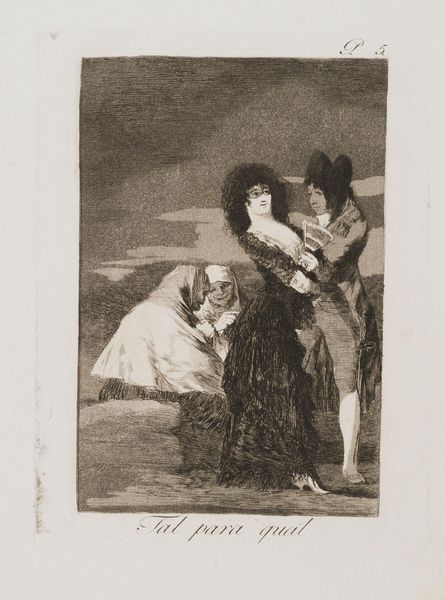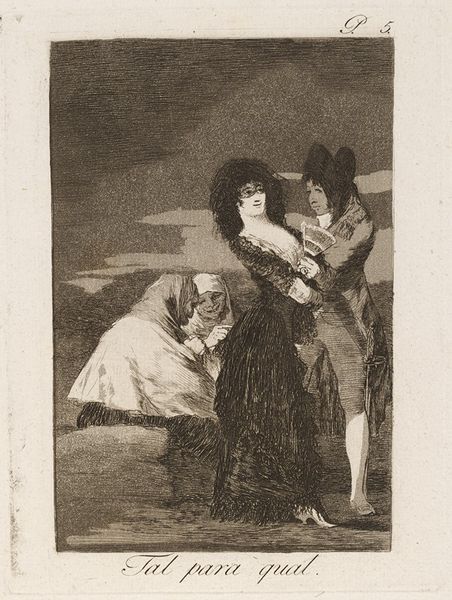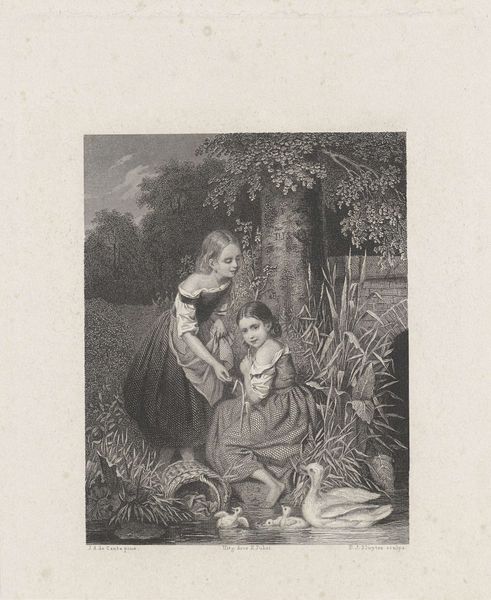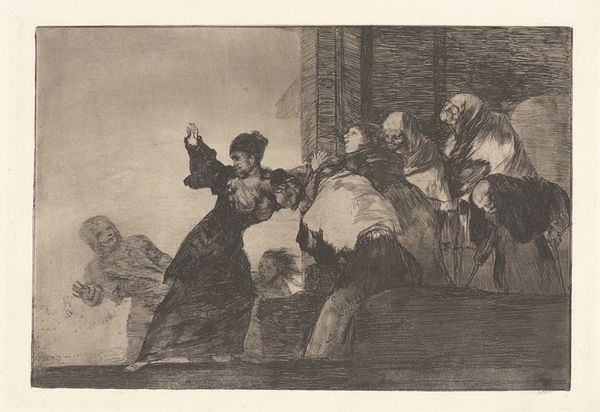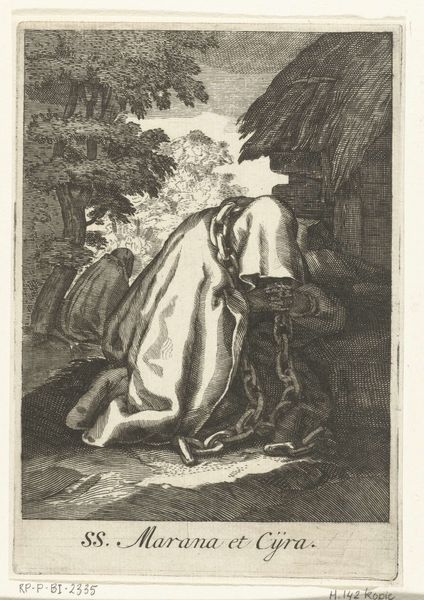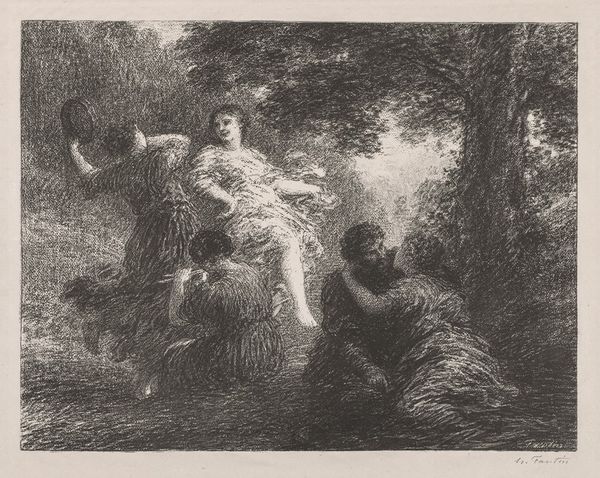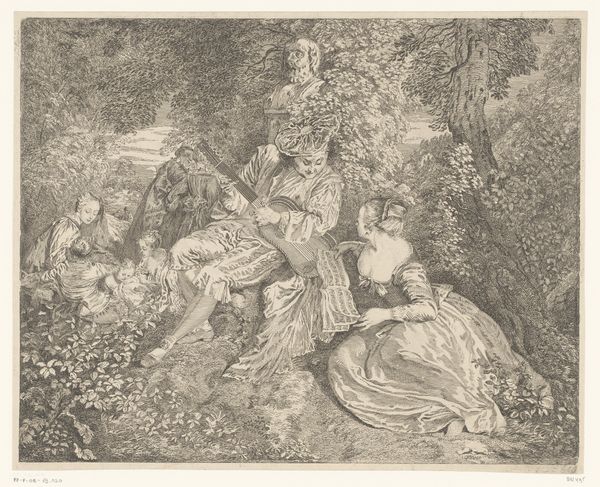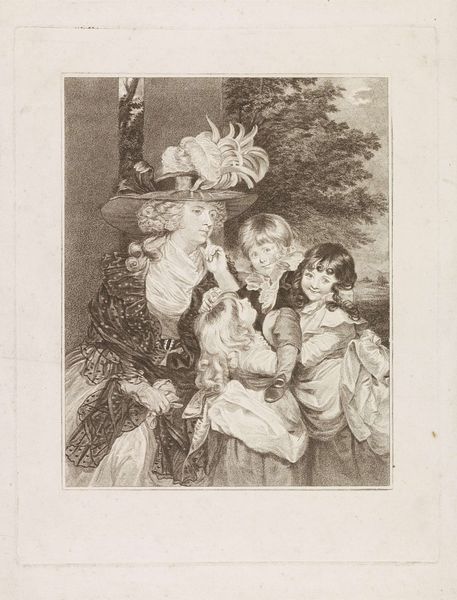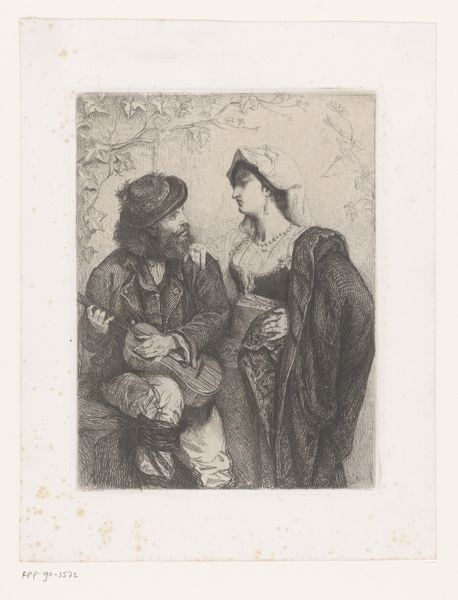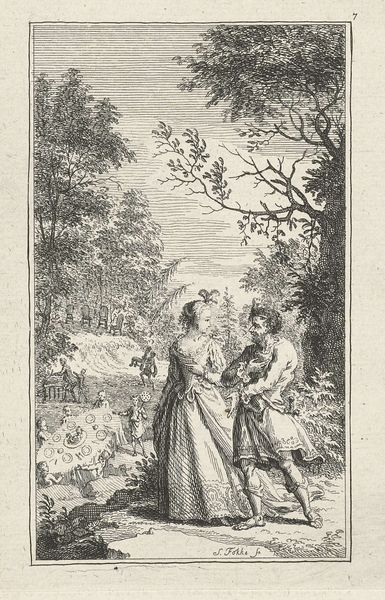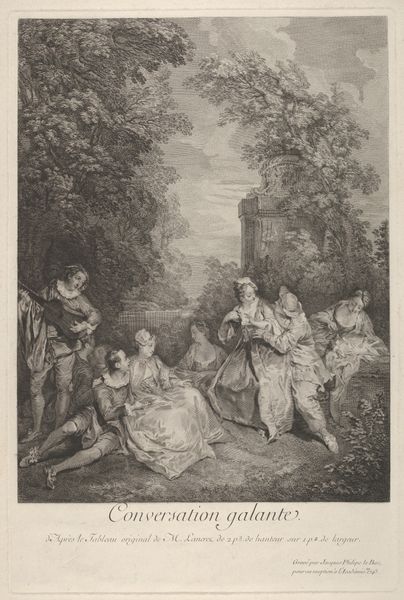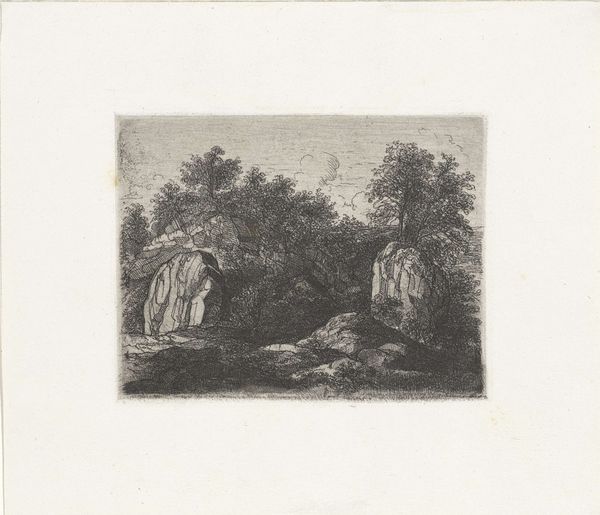
Huwelijksportret van Isaac Abrahamsz Massa (1586-1643) en Beatrix van der Laen (1592-1639), getrouwd te Haarlem op 25 april 1622 1875 - 1876
0:00
0:00
print, etching, engraving
#
portrait
#
dutch-golden-age
# print
#
etching
#
genre-painting
#
engraving
Dimensions: height 215 mm, width 263 mm
Copyright: Rijks Museum: Open Domain
Curator: Let's focus on this fascinating piece: "Huwelijksportret van Isaac Abrahamsz Massa (1586-1643) en Beatrix van der Laen (1592-1639), getrouwd te Haarlem op 25 april 1622", a print created between 1875 and 1876 by Johannes Arnoldus Boland, capturing a moment of domesticity and social positioning. Editor: Immediately, I’m drawn to the landscape setting. It gives a surprisingly informal feeling for a marriage portrait; almost like they've escaped the rigid formality expected of them. There's something unsettling about it. Curator: Absolutely. Placing them in an outdoor, seemingly relaxed setting challenged the conventions of traditional marriage portraiture of that era. Boland is reflecting on social structures here; class, gender roles, and the constructed nature of intimacy in marriage. Consider how Beatrix leans into Isaac; a performance of closeness for the outside world. Editor: You're right, it's staged relaxation. I notice the architecture in the background - what does that imply about aspirations and their belonging within the broader society? And then there are the carefully cultivated expressions. They appear to smile, but does the symbol communicate truth or mere propriety? Curator: It invites questions about agency, doesn’t it? How much choice did Beatrix have? This print speaks to the limited space women occupied, and the expectation for them to conform within marital expectations. Editor: Their clothing, the lavish ruffs, they're a clear visual signifier of wealth and status, but in stark monochrome they almost feel uniform, even restrictive. Do they become visual symbols for the gilded cage that women sometimes found themselves within during marriage? Curator: I would agree that these striking garments denote the restrictions. The performativity of marriage, social class, and power. Perhaps that architecture mirrors the internal psychological and emotional landscape of those social bindings. It's more than just representation; it's a cultural record etched on paper, holding tensions that resonate even today. Editor: It’s funny how the past speaks through imagery – its power continues, like echoes from chambers that have changed names through time. Curator: Precisely; and thanks to Boland, these questions around societal expectation of love, gender, and social structures in marriage are still echoing to us.
Comments
No comments
Be the first to comment and join the conversation on the ultimate creative platform.
